We have been living and traveling full time in our motorhome for over four years. Very early on we easily adapted our thinking and referred to our motorhome as “home” no matter where it was parked, be it on Forest Service land or a Walmart parking lot. However, we have encountered people who struggle with that concept and ask us “Where’s home”? After we tell them we no longer own a house and we travel fulltime they look at us with concern. It is as though they view us as "uprooted" and not "grounded". They think of us as "homeless". We usually tell these individuals that we lived in the Seattle area for over 32 years prior to hitting the road and that we have retained Washington State as our domicile. It's where we vote and have Library cards. They seem to find comfort in that but we still try to make them understand that our being “houseless” doesn’t make us “homeless”. What it does is make us very happy.
Where we have been – Mt Ausangate and the Amazonian basin in Peru
6/25 - 7/6 2014
- 5 day/4 night trek on the Mt Ausangate Circuit
- Sightseeing at the Tambopata Research Center in the Amazonian basin
This is a continuation of our "trip of a lifetime" to Peru with Andes Adventures. I have already written about our trek on the Inca Trail to Machu Picchu so this post will cover the high altitude trek we did around Mt Ausangate as well as our visit to the Tambopata Research Center in Peru’s Amazonian basin. We left the hotel in Cusco and boarded a bus for Tinqui where we would start our trek. We did some sightseeing along the way and got our first view of Mt Ausangate (20,905 feet), to the right in the photo below, and the surrounding mountains. It seemed a little daunting to think about walking around it.
Mt Ausangate (R), Peru
The road used to be gravel and the trip from Cusco to Tinqui used to take eight hours but it is now an excellent paved road and the drive takes only three.
Tinqui, Peru
Our itinerary said we would stay in a “rustic hostel”.
Hostel Ausangate in Tinqui, Peru
The Hostel Ausangate is indeed “rustic” but the proprietor, Cayitano Crispin, quite possibly has the best smile I have ever seen and he is very generous in his use of it. He accompanied us on our trek as the head horse driver (as well as our resident "Shaman").
Cayitano and Abelardo, our guide
Our room was serviceable and if desired we could even have taken showers although they would have been cold. It is possible for this trek to be shorter in duration by skipping the night spent in Tinqui. With the improved road and faster drive to Tinqui there is still enough time to do the hike to Upis, the first camp on the trek. As a consequence Andes Adventures has changed the itinerary beginning in 2015 and Cayitano is having a hostel built in Upis as fewer trekkers will be using this one.
Jean resting in our room at the Hostel Ausangate in Tinqui, Peru
We started out the next morning hiking through the town. Unlike many hikes to mountains where views are obscured by trees we were already getting a look at our destination.
Abelardo (our guide), Jean and Randy heading out of Tinqui, Peru
We encountered some local people on our way out of town. As some women are weavers by profession it is common for them to be spinning wool (alpaca and llama) by hand as they walk. I found this YouTube video that illustrates how it is done.
Local women outside of Tinqui, Peru
Once out of town we entered an area of open arid grasslands. We had surprisingly good views of Mt Ausangate as there were not only no trees but there were no other peaks blocking our view.
Seen while trekking the Mt Ausangate Circuit, Peru
One big difference between this trek and our Inca Trail trek was that there would be fewer porters as horses carried our gear.
Porters and pack horses seen while trekking the Mt Ausangate Circuit, Peru
John and I both had acquired colds while hiking the Inca Trail and I had developed a particularly bad cough so we had some concerns about whether it was a good idea to do the Mt Ausangate Circuit. What we decided to do was hire two additional horses so either of us could ride when we needed to. I ended up riding that intelligent and surefooted little horse, “Paccha”, more than I thought I would so I was very grateful to have him along.
Jean on her new best friend “Paccha”
A road is being built to Upis which made for dusty walking at times when trucks zoomed past us.
Abelardo, our guide, trying (in vain) to slow a speeding truck before it passed us
However, driving as far as Upis would skip some beautiful scenery so we were happy to walk.
Seen while trekking the Mt Ausangate Circuit, Peru
Farms with rustic buildings and stone fences were a common site.
Seen while trekking the Mt Ausangate Circuit, Peru
We hiked 7.5 miles that day and camped that night at Upis (14,400 feet).
Our camp at Upis, Peru
Upis has a popular feature – a hot spring. Not many of our group decided to indulge but those who did thoroughly enjoyed it.
Fellow trekkers enjoying the hot spring in Upis, Peru
We started early the next day by crossing a valley before beginning our climb to our first pass, Arapa Pass (15,585 feet).
Mt Ausangate seen while trekking the Mt Ausangate Circuit, Peru
The people who live in the highlands are typically weavers and farmers primarily raising llamas and alpacas.
Alpacas seen while trekking the Mt Ausangate Circuit, Peru
Something that was humbling was the fact that what was a high altitude adventure for us was a routine activity for locals. While we trudged up mountain passes in our expensive hiking boots and high tech clothing we saw several women walking briskly up the trail in their light shoes and lovely traditional dresses and hats.
Local people seen while trekking the Mt Ausangate Circuit, Peru
The view of an alpine desert from Arapa Pass provided a dramatic contrast …
Seen from Arapa Pass while trekking the Mt Ausangate Circuit, Peru
… to snow covered peaks and glaciers.
Fellow trekkers taking a break at Arapa Pass while trekking the Mt Ausangate Circuit, Peru
Not all locals go on foot. Some individuals did use horses for transportation.
Seen while trekking the Mt Ausangate Circuit, Peru
Once over Arapa Pass we began getting views of other mountains such as Puca Punta (17,717 feet).
Puca Punta (17,717 feet), Peru
We continued down to the valley …
Seen while trekking the Mt Ausangate Circuit, Peru
… past a lovely lake.
Seen while trekking the Mt Ausangate Circuit, Peru
I suppose it shouldn’t have come as a surprise that a desert, even an alpine one, would have cacti but it did seem incongruous to me at the time.
Alpine cacti seen while trekking the Mt Ausangate Circuit, Peru
As we continued our trek the views continued to change. Something neat about mountains is that depending on the angle you are looking at them they can look completely different. I thought Puca Punta was quite attractive seen from this angle.
Puca Punta (17,717 feet), Peru
At one point in the day John decided to try out his horse (and keep me company for a while). Whereas I used to own a horse and was comfortable riding it was only the second time he had ever been on one and I thought he did quite well. While he didn't ride his horse very much during the trek one of our fellow trekkers was feeling poorly and she rode him a lot so we were happy we had gone ahead and arranged for both horses.
John taking his horse "out for a spin"
We hiked 8.5 miles that day and camped that night in Jampamayo Valley. One of the fellows in our group had a birthday during the trek and our cooks surprised him with an elaborate cake. I celebrated a birthday on a trek in Nepal and was also presented with a cake but it still amazed me that cooks on high altitude treks are able to bake cakes on propane or kerosene stoves.
Birthday cake for one of our fellow trekkers
We left camp early the next morning knowing our highest pass was ahead of us, Palomani Pass (16,600 feet).
Our camp in Jampamayo Valley, Peru
It was not uncommon to see llamas and alpacas grazing on the short grass. I wondered how farmers kept track of where they were and how they rounded them up when it came time to shear or butcher them. I suppose they could have used dogs although I never saw any.
Llamas seen while trekking the Mt Ausangate Circuit, Peru
Not surprisingly I relied on my horse to get up Palomani Pass. A disadvantage to riding rather than walking is that one doesn’t generate any body heat so I had to wear nearly all of my clothing to stay warm. However there was one big advantage to my riding. When I walk I have to watch where I put my feet (I have a tendency to trip and fall) but I had learned early on that Paccha knew the way and was quite capable of “steering” himself. Therefore I could spend all of my time just looking around enjoying the views.
Jean and Paccha ascending Palomani Pass (16,600 feet), Peru
Once at the pass we were again treated to an expansive view.
Seen from Palomani Pass (16,600 feet), Peru
The color of the surrounding terrain was bold in places …
Seen from Palomani Pass (16,600 feet), Peru
… and subtle in others. It reminded us a bit of the southwest US.
Seen from Palomani Pass (16,600 feet), Peru
The pass also provided us with a different view of Mt Ausangate.
Mt Ausangate (20,905 feet) seen from Palomani Pass (16,600 feet), Peru
We gratefully descended from this pass toward the next valley.
Jean descending Palomani Pass (16,600 feet), Peru
This appeared to be an abandoned farm and it made me wonder what happened to the former occupants.
Abandoned farm seen while trekking around Mt Ausangate in Peru
Once in the valley we saw even more alpine cacti ...
Alpine cactus seen while trekking around Mt Ausangate in Peru
… as well as glacier fed streams.
Glacial fed stream seen while trekking around Mt Ausangate in Peru
We also got views of Tres Picos (19,900 feet).
Tres Picos (19,990 feet), Peru
We hiked 7.4 miles that day. I looked forward to camping “lower” in Jampa Valley in order to breathe more easily. There are few other circumstances where 14,850 feet sounds “low”.
Our camp at Jampa Valley, Peru
It was quite cold the next morning …
Seen while trekking around Mt Ausangate in Peru
… and the nearby streams were frozen. It made me wonder where our cooks had gotten our water that morning but as usual there was plenty available for our limitless cups of coca leaf tea and our wash basins as well as our water bottles.
Ice crystals seen while trekking around Mt Ausangate in Peru
Before long after starting out we began getting views of Colque-Cruz (19,554 feet).
Colque-Cruz (19,554 feet), Peru
They were far away but it was fun to see some wild vicunas.
Vicunas seen while trekking around Mt Ausangate in Peru
We continued up to Campa Pass at 16,400 feet where the views of Colque-Cruz (19,554 feet) and Tres Picos (19,990 feet) became quite expansive.
Colque-Cruz (19,554 feet) and Tres Picos (19,990 feet) seen from Campa Pass, Peru
A common occurrence was whenever we stopped for a break several women would appear and they would lay out their woven crafts hoping to make a sale. At one lunch stop three women caught up to us and one of them was a spry 80 years old. In hindsight I wish I had made the effort to shop and purchase something from each one of them perhaps as gifts for my three sisters. Unfortunately I was feeling quite poorly and spent our breaks flat on my back resting. I feel a great sense of regret at the missed opportunity to interact with (and help financially) such amazing women.
Local women hoping to make a sale to our fellow trekkers
As we descended from the pass we began to see occasional bits of color ...
Moss seen while trekking around Mt Ausangate in Peru
… as the trail led us away from the mountains …
Abelardo, our guide, with Colque-Cruz (19,554 feet), Peru
… and past beautiful blue lakes.
Seen while trekking around Mt Ausangate in Peru
Our hike for the day was 10.6 miles and we camped in Pacchanta (13,050 feet) which provided us with another opportunity to soak in local hot springs. We were served a traditional "pachamanca" dinner prepared in an ancient Quechua method. Meat (alpaca and guinea pig) and vegetables were cooked in an underground pit with heated stones. We had resisted eating any guinea pig during the time we had spent thus far in Peru. We just had too many fond memories of the pet “piggies” our boys had when they were young. However, we felt that in this particular situation it would be disrespectful to not even try it so we did (don’t tell our boys). It tasted quite good, like chicken dark meat, but we didn’t feel compelled to eat more. We filled up on alpaca instead.
Our last day of the trek took us through several small villages as we headed back to Tinqui. We encountered more local people, tourists and vehicles and it served as a reintroduction to urban living. After returning to Tinqui we boarded a bus for the return trip to Cusco. The next morning we said our bittersweet goodbyes to the six other people on the trek. Between our Inca Trail trek and this one we had been with them for over two weeks at that point and I can’t imagine a better group of individuals to have shared this adventure. All of our Ausangate Trek photos are on Flickr.
Our fellow trekkers in Cusco, Peru
Our Peru adventure was not quite over as we had plans to visit the Tambopata Research Center in Peru’s Amazonian Basin. Not surprisingly our colds did not get any better on the Ausangate Circuit (in fact they got worse). It was just too high, too dry and too cold. We debated about whether or not to fly home early but decided that the six days we would spend in the low, humid and warm environment in the forest along the Tambopata River could help us recover (at least enough so we could fly home more comfortably). So we flew from Cusco to Puerto Maldonado where we were loaded onto a bus which took us to where we would catch the boat. We then headed upstream on the Tambopata River.
Tour boat on the Tambopata River, Peru
The guides were adept at sighting wildlife on the river bank …
Caiman seen along the Tambopata River, Peru
… and in the trees.
Howler monkey seen along the Tambopata River, Peru
It didn’t matter how small the creature was …
Turtle (with butterfly “hat”) seen along the Tambopata River, Peru
… or how camouflaged they were.
Capybara (and friend) seen along the Tambopata River, Peru
We spent the first night at the Refugio Amazonas.
Tambopata River, Peru
The next morning John got up early to visit the nearby canopy tower.
Canopy tower at Refugio Amazonas, Peru
He was there early enough to photograph the sun rising …
Seen from the canopy tower at Refugio Amazonas, Peru
… as well as this lovely view of the forest canopy.
Seen from the canopy tower at Refugio Amazonas, Peru
We then boarded a different (and less substantial) boat for the 4.5 hour boat ride up the river to the Tambopata Research Center. The water was quite muddy and there were submerged trees and branches. Our boat had a pilot as well as a spotter at the bow keeping an eye out for hazards in the water.
Tambopata River, Peru
It was a bit disconcerting to ride in a low boat and being so close to the swirling muddy water knowing such creatures as caiman were nearby.
Caiman seen along the Tambopata River, Peru
And it was quite an experience to see these anacondas in the brush near the shore. We were told that the larger one is a female (and appeared to be at least 16 inches in diameter) and the smaller ones are males.
Anacondas along the Tambopata River, Peru
While the boat ride was interesting we were happy to finally arrive at the Tambopata Research Center. The accommodations were quite comfortable and the food excellent given the remote location.
Tambopata Research Center, Peru
The rooms are interesting in that one wall is largely open. We both spent a great deal of time in our room resting and simply breathing. The moist air felt like honey going into my stressed lungs. Laying there under our mosquito net listening to the sounds of the forest made John feel like we were recuperating in a military hospital in an old World War II movie set somewhere exotic like the Philippines.
Room in Tambopata Research Center, Peru
Something that the Tambopata Research Center is well known for is the Tambopata Macaw Project as the nearby forest has the highest concentration of avian clay licks (an important source of salt) in the world. We very much would have liked to have seen the large number of colorful birds congregating at the clay lick but getting there was more than we could do. We consoled ourselves with the knowledge that if we wanted to we could always come back. Unlike our high altitude trek this is a trip we could do even when we are much older.
Blue-and-yellow Macaws and Scarlet Macaws at the clay lick
However, we did have some opportunities to see macaws. There were four Scarlet Macaws that had been hand raised and then released and they frequented the dining room at the lodge. Tourists were advised to not leave any food unattended as they were quick to swoop down and snatch a dinner roll carelessly left on a plate. Our room contained a safe, not for storing valuables but to keep any food out of the reach of these clever birds who regularly visited the guest's rooms.
Scarlet Macaws at the Tambopata Research Center, Peru
I don’t like to dwell on misfortune but the truth is that our respective illnesses had a huge impact on our Tambopata adventure. We ended up cutting our visit short by a day because John developed a fever of 103 degrees (fortunately we had no trouble getting through customs after we returned to the US and we both were largely recovered in about two weeks). On the morning we left we had to get up quite early to catch the boat that would return us to “civilization”. It was still dark and the six hour boat ride had a surreal dreamlike quality to it. Recent rain had increased the flow of the river and the boat moved quickly down stream skillfully dodging the partially submerged trees. Once back at Puerto Maldonado we were (eventually) able to convince someone at the airport to change us to an earlier flight to Lima. Up until that day our inability to speak Spanish was not really an issue while traveling in Peru as we had been on a tour with English speaking guides. Now we were on our own and it was quite a humbling learning experience.
The last photo we have from Peru is this sunrise over the Tambopata River. To me it epitomizes how we felt (despite our challenges) about having had this opportunity to visit the wonderful country of Peru. We are completely happy with the service we got from Andes Adventures. All of our Tambopata Research Center tour photos are on Flickr .
Sunrise over the Tambopata River, Peru
This next bit is just something that Jean has been thinking about
Unhealthy Healthcare
In the past 18 months I have spent way too much time in our healthcare system. Most notably I broke my wrist in June 2013 and eventually had to have complicated surgery to repair it. And then this past spring I started having upper arm pain due to a shoulder issue which will require surgery. Fortunately I have health insurance so we are able to afford for me to get the care I need. Unfortunately not everyone can say this. I have read that 60% of people who go bankrupt do so because of medical bills. However, the Affordable Care Act, “Obamacare”, will undoubtedly change this as more Americans can now afford to purchase health insurance. I’ve read that 9.5 million previously uninsured people now have health insurance. In addition many of those who already had insurance, including us, now have better insurance.
We’re the first to say that Obamacare is not perfect but it is a huge improvement over the “Nobody Cares” from the previous administration. I’m not planning to dwell on this topic as I know it is a divisive issue but I do have a few points to make. Obamacare is great for those of us who are retired but not old enough for Medicare. Our monthly premiums are lower, our deductible is lower, our percentage of coinsurance is lower and our maximum out of pocket is lower.
It has been frustrating to hear that those who say they dislike Obamacare actually agree with individual components; keeping children on parent’s plans until age 26, not excluding those with preexisting conditions, preventive services, no lifetime caps etc. Perhaps they object to the individual mandate. But we have plenty of laws enacted for our own good; speed limits, seat belt requirements, prohibitions on alcohol and cell phone use while driving etc. It is an unfortunate truth that we are sometimes our own worst enemies and we need to be protected from ourselves. On the flip side there are some who oppose Obamacare because they don't think it goes far enough.
I think too much emphasis has been put on encouraging young adults to obtain health insurance for the sole purpose of paying the expenses of those of us who need more medical care. Instead I think the focus should be put on the fact that health insurance is important for everyone to have, even the "young invincibles" because I know from personal experience that the young are not so invincible. Let's face it, "shit happens". Back in 1978 when I was 24 John and I took up cross country skiing. Through a clumsy accident I dislocated a hip and had to be transported to a hospital emergency room. Luckily I got there soon enough that my hip could be "popped" back in place so I didn't have to have surgery to repair it. But I still had to spend three days in the hospital. Fortunately this was before healthcare costs had skyrocketed in the US and I had some catastrophic insurance. However, my medical bills still wiped me out but I was okay as I was living with John. Fortunately he was able to completely support me and pay the rest of my medical bills; definitely not something every 25 year old guy could do for his girl friend these days.
In addition, young people need to be concerned with more than freak accidents. For example there has been a marked increase in diseases affecting them such as obesity, diabetes, high cholesterol and heart disease. And not all cancers take decades to develop. According to the National Cancer Institute a wide variety can afflict individuals aged 15-39. The most common types of cancer are lymphoma, leukemia and germ cell tumors. We also know this is true from personal experience. In 2007 our son Tom, at the age of 20, was diagnosed with testicular cancer. John was still working at the time so we had good insurance from his employer. However, since Tom was no longer a fulltime student we had been forced to take him off of our plan (something we would not have had to do under Obamacare) but to be safe we had purchased catastrophic insurance for him. It was reasonably economical but his policy had a high deductible, a high coinsurance rate and a high maximum out of pocket cost as well as a lifetime cap. So even with his insurance his surgery and prophylactic radiation treatments cost us nearly $10,000 (with Obamacare it would have cost us nothing because we had already met our maximum out of pocket for that year). Thankfully Obamacare has enabled Tom to purchase great health insurance on his pizza delivery guy salary and we no longer fear his going bankrupt or our being put into a position where we have to help him cover his medical costs especially if he exceeded his lifetime cap.
Another reason for having at least some form of health insurance is that it gets you whatever lower costs for treatment that your insurance company has been able to negotiate with the providers. In my case without insurance the bills for my broken wrist would have totaled $48,163.06 but with the subscriber discount through my insurance company my bills totaled $28,530.23. If I had not had insurance I would have been expected to pay the full $48,163.06. In my internet search for information about wrist injuries last summer I came across some forums where individuals without insurance told sad stories of having broken wrists that weren’t healing despite having been in a cast for many months, the only treatment they could afford. My heart goes out to those individuals as I know how painful it is and how much it impacts one’s day to day life to have an improperly healed and painful wrist.
We believe Obamacare is definitely a step in the right direction. However, it is only addressing the high cost of health insurance and not the big issue, the high cost of healthcare itself. We came face to face with the issue after I broke my wrist last summer. Making a long story short an initial misdiagnosis led to improper healing. Months later the necessary repair involved surgery complete with a bone graft. However, when I look at the individual bills and remember what exactly was done I can’t help but wonder how it could cost $28,503.23 much less $48,163.06.
Steven Brill, tried to explain that in an article he wrote for the March 2013 issue of Time magazine, "The Bitter Pill: Why Medical Bills Are Killing Us". The article is quite long and worth reading if you want to understand the issue but this summary by Patricia Dubrava is a good place to start. A key point is that of the "chargemaster". Brill writes that "the chargemaster … is every hospital's internal price list. Decades ago it was a document the size of a phone book; now it's a massive computer file, thousands of items long, maintained by every hospital… It would seem to be an important document. However, I quickly found that although every hospital has a chargemaster, officials treat it as if it were an eccentric uncle living in the attic. Whenever I asked, they deflected all conversation away from it. They even argued that it is irrelevant. I soon found that they have good reason to hope that outsiders pay no attention to the chargemaster or the process that produces it. For there seems to be no process, no rationale, behind the core document that is the basis for hundreds of billions of dollars in health care bills." … “No hospital's chargemaster prices are consistent with those of any other hospital, nor do they seem to be based on anything objective - like cost - that any hospital executive I spoke with was able to explain. ‘They were set in cement a long time ago and just keep going up almost automatically,’ says one hospital chief financial officer with a shrug.” Stephen Brill also writes that “Insurance companies would prefer to negotiate costs beginning at the actual cost of the service (much like how Medicare does) but instead have been forced to negotiate down from the arbitrary costs listed in the chargemaster.” He also states that the negotiation over discounts between insurance companies and hospitals “work down from the chargemaster prices rather than up from what Medicare would pay. Getting a 50% or even 60% discount off the chargemaster price of an item that costs $13 and lists for $199.50 is still no bargain.”
I got to see examples of this when I examined the “Explanation of Benefits” from my insurance company after my wrist injury. When I got an MRI I needed to first have a “contrast medium” injected into my hand. One person, with the help of X-Ray, placed the needle in my hand and then a second person came in the room. She picked up the prefilled syringe, attached it to the needle, injected the solution and then removed the syringe and placed it back on the table. She was in the room for less than five minutes and the “chargemaster” cost just for her service, not the use of the X-Ray equipment or anything else, was $413.00. That could add up to nearly $5,000 per hour. The negotiated cost of her service was $178.10 but even after that reduction an hourly wage for her services could add up to over $2,000 and somehow I just don’t think her salary was anywhere near that. When I had my surgery the chargemaster cost for the five and a half hours that I spent in the hospital was $33,111.60 (this didn’t include my surgeon or the anesthesiologist) and I find it hard to believe that my share of the use of the facility and materials could cost over $6,000 for each hour that I was there. The negotiated cost was $23,582.05 but that is still $4,000 per hour. As a retired registered nurse I know that not very much of that was going to staffing; the nurses, the unit clerks and orderlies etc.
Jean and Dr Miyano in a $4,000 per hour room at Swedish Hospital, Seattle
Stephen Brill makes an effort to explain what wealthy “nonprofit” hospitals do with all the profit. “In a trend similar to what we've seen in nonprofit colleges and universities - where there has been an arms race of sorts to use rising tuition to construct buildings and add courses of study - the hospitals improve and expand facilities (despite the fact that the U.S. has more hospital beds than it can fill), buy more equipment, hire more people, offer more services, buy rival hospitals and then raise executive salaries because their operations have gotten so much larger”. He also states that the lowest paid CEO on the list of 10 largest nonprofit hospitals earns $2,080,779. I found his explanation to be too brief and too general to adequately answer the question where do the profits go. In an over simplification of things I have read elsewhere one explanation is that doctors are now inclined to order more tests like CT Scans to insure the “best care possible” and “just to be sure” not to mention desiring to avoid lawsuits with “CYA” (cover your ass) thinking. Therefore hospitals need to purchase more machines to cope with the increased demand. The companies that make CT machines are constantly trying to improve them and then market them to hospitals who are motivated to be competitive by purchasing “state of the art” equipment.
Toward the end of Steven Brill’s article he asks the question “So how can we fix it?” His answer is extensive but the summary by Patricia Dubrava contains some excerpts including “Change the chargemaster, the infamous price list of products and services all hospitals use, which seems to be based in fantasy and results in drastic overpricing like a 10,000% markup on acetaminophen… Reduce drug prices to what they get in other developed countries. Save $90 billion a year”. Brill also states that change “is unlikely to happen: hospitals are often the most politically powerful institution in a congressional district”.
I’m 60 now and I can’t say I am optimistic that I will live to see true healthcare reform. It will be less of an issue for us in five years when we will both be on Medicare. But the high cost of healthcare will remain a concern especially as it will become more of an issue for our children as they grow older. And it is in our best interest for all of our fellow Americans to have access to affordable healthcare. However, we will see more and more technological advances which will hopefully lower costs. There are some great TED Talks on the subject. One is “The Wireless Future of Medicine” by Eric Topol, author of The Creative Destruction of Medicine. How the Digital Revolution Will Create Better Health Care. He also has a series of short videos on the topic. Another interesting TED talk on the subject is by Daniel Kraft, “Medicine's future? There's an app for that”.
And hopefully we, the consumers, will have access to better resources to help us take a more active role in our own healthcare. The internet is an obvious place to look and we already do in large numbers. According to the CDC 50 percent of adults have researched health information online and popular sites include WebMD, National Institute of Health, Intelihealth.com and Mayoclinic.org. The problem is that there are too many online resources and many are overwhelming in the information they provide and are difficult to search. They may also be incomplete and not necessarily up to date. In my initial search for information about wrist injuries every site I went to assumed that a doctor was seen and that their diagnosis was definitive. In my case an ER doctor told me that my wrist was only sprained so that is how I treated it. So after several days when the swelling went down I started doing the recommended gentle range of motion exercises. But then it didn't seem to be getting any better. I resisted seeing a doctor because I was sure I would just be told that a sprain in someone my "age" just take longer to heal. I just didn't see the point in paying for an appointment in order to be told that I am getting old. So I tried to be patient with my body. However, when it became obvious weeks later that it wasn’t healing properly I kept trying different key words in an internet search and it took a while to finally find a site that indicated that the initial diagnosis could very well be wrong. Apparently wrist fractures often don’t show up on the initial X-Ray.
But we have also had some good luck using online resources to accurately diagnose and treat a health issue very quickly. About two years ago John woke up with intense intermittent dizziness. We were at Glacier National Park at the time and didn’t have ready access to a healthcare facility. Fortunately an online search quickly led him to learn that he most likely had “Benign Paroxysmal Positional Vertigo” (BPPV for short), a condition where calcium crystals (known as otoconia) within the inner ear become dislodged causing dizziness. He found videos on YouTube that showed how one can not only test for it but self treat it by using a technique called the “Epley Maneuver”. We did it and the condition resolved.
I would also hope that there will be an online resource for healthcare providers to quickly learn what current best practices are for a given health issue. It is obviously impossible for every healthcare professional to remember everything they have ever learned and to keep up with all new information. Perhaps there already is such a resource but if so then not all healthcare providers are using it. One example is when a few years ago John and I both picked up Giardia while backpacking in Grand Canyon (we have since changed our water treatment method). We were each seen by different doctors at the medical clinic on the south rim within Grand Canyon National Park and were both put on Flagyl. We initially got better but as time went on things still weren't quite right with either of us and about two weeks later my symptoms worsened. At that point in time we had left Arizona and were heading to Colorado so we stopped at a walk in clinic on the way (in Utah). The nurse practitioner there gave me a different medication, Tindamax, to treat what was assumed to be continuing Giardiasis.
But about two weeks later things still weren't quite right with either of us. By that time we were in Lake City, Colorado and we visited another walk in clinic and fortunately the nurse practitioner there had the answer. She told us that Giardia and the medications that treat it damages the lining of the intestine and causes one to be temporarily lactose intolerant and that is what was causing our continued symptoms, not Giardia (which we both tested negative). We were told to stop dairy for three months and to take probiotics and when we did that all of our symptoms soon went away. We were able to later reintroduce dairy products and we have both been fine ever since. It would have been great if the first doctor we had seen had given us that information.
But my best example is my previously mentioned wrist injury. I had tripped and fallen on some rocks while backpacking. Shortly after my wrist became quite painful and swollen.
Jean can smile because she does not yet know how badly her wrist is injured and what the future holds
We hiked out the next day and I went to a hospital emergency room as it was the closest facility. We knew it would be more expensive than a walk in clinic but we didn’t know of any in the area. I also thought an ER doctor would be better qualified to evaluate my wrist than perhaps a nurse practitioner or a physician’s assistant who commonly staff such clinics. Once at the ER my wrist was X-Rayed and the ER doctor told me it was just sprained so he gave me a splint and sent me on my way.
As I said before that initial diagnosis was incorrect. I have since learned that because wrist fractures (the Scaphoid bone in my case) often don’t show up on the initial X-Ray that Orthopedic doctors think it is best to put a cast on the injured wrist and repeat the X-Ray in two weeks. If a fracture is still not apparent then it can safely be assumed that the wrist is sprained and the cast replaced with a splint. But if it is fractured then it would remain in a cast for another four weeks. Unfortunately the ER doctor was either unaware of that or had forgotten it and by the time I found out it was actually broken the two pieces of my Scaphoid bone had become misaligned and were healing in a crimped position causing pain. Surgical repair then required rebreaking it, inserting a bone graft, repositioning the two pieces of bone and screwing it all together.
Granted the consequences in the first example were relatively minor, just several weeks of some intestinal cramping etc. But that is not the case in the second. Needless to say the complicated wrist surgery I had was far more expensive than a cast would have been. Nearly four months had passed by the time I got the right diagnosis, found the right doctor and had the necessary surgery. As a result my wrist was in a splint or cast for a total of seven months and in that time I lost both strength and flexibility in my hand and arm and there is a noticeable loss of muscle mass. For many months after I stopped wearing the splint I suffered with painful stiffness in my fingers every morning (update - An additional complication to having my wrist immobilized and not using that arm for so long was that I developed a "frozen" shoulder which required surgical intervention and "aggressive" physical therapy to recover from). It would have been so great if the ER doctor had been able and willing to use an up to date tool to find out about what the best practice was for wrist injuries.
Another reason why we need better online resources is that it has been reported that we have a shortage of healthcare professionals; doctors, nurse practitioners and physician assistants. And it is only going to get worse as we "Baby Boomers" are living longer and have higher expectations. According to AAMC (Association of American Medical Colleges) estimates, the United States faces a shortage of more than 91,500 physicians by 2020. Globally, the WHO (World Health Organization) estimates a shortage of 4.3 million physicians, nurses and other health workers worldwide, especially in many developing countries.
It is obvious that big changes need to occur and what I think we need is the creative construction of medicine and I have faith that younger “Digital Natives” will be able to build a better system in the future (provided they spend less time on Facebook and Reddit). They are the ones who will embrace new technologies and I’ve read that young adults believe the government should be more involved with our healthcare system (so different from what many currently in power believe). Perhaps the US will eventually have a single payer system. Hopefully sometime in the future there will be a healthcare system based on the actual cost of treatment rather than some archaic document.
While I am slogging my way through the system we have now I am trying to figure what I can do to improve the experience and the outcome. In the future if there is time I’m going to do my research and be well informed about whatever problem I seem to be having. I’m going to try to ask more questions especially better questions. For example I could ask if the doctor's diagnosis is definitive and what other possibilities should be considered. When it comes to medical equipment I will ask how much it costs and when possible I’ll consider buying it cheaper elsewhere. When it comes to services I’ll ask if there is an additional charge for it. I would have happily purchased my own splint from Walgreens down the street rather than pay the inflated cost at the hospital and I was quite capable of putting on my own splint rather than paying the ER doctor an additional $164.00 to put it on for me.
However, the best thing to do is to avoid the healthcare system as much as possible and in order to do this I need to take real personal responsibility for my health. A good place to start is maintaining a healthy weight but there is a wide range of what constitutes a “healthy” weight for one’s height. For example I’m 5’8” and my body mass index would fall within the normal range if I weighed anywhere between 125 and 158 pounds but when it comes to stress on one’s body that 33 pound spread is significant. In the past I considered 140 pounds as my normal weight but in 2012 after we returned from four months in New Zealand and Australia I was dismayed to discover I weighed 155. It was still a “healthy” weight for me and as I had acquired it gradually I didn’t notice a difference in how I felt. But intellectually I knew the additional weight increased stress on my arthritic knees so I lost 15 pounds and then another 10. As a backpacker weighing 130 pounds I have experienced the big difference between how I feel while carrying a 25 pound pack and how I feel after I take it off. That alone is enough to convince me to never let my weight get back up to a “healthy” 155 pound (much less higher). And my knees love it. I no longer take Naproxen nor do I fantasize about knee replacements.
Of course diet and exercise have a huge effect on one’s health. I do my best to eat well (with the exceptions of the Ramen Noodles, instant mashed potatoes and Stove Top Stuffing we so enjoy while backpacking) and I have exercised aerobically reasonably regularly for years. However, once my knees decided they didn’t like running anymore I needed to find another way. When we still lived in a house I went to a gym and used an elliptical but once we started traveling fulltime in our motorhome that was no longer an option. I first tried a Magna Trainer mini exercise bike and later a Concept 2 Rowing Machine. But neither really met my needs.
Jean on her Concept 2 rowing machine
Then John got me an Xiser, a high quality portable stair stepper. It is perfect! The Xiser folks are big advocates of “Short Burst” training (very short periods of time at high intensity followed by short rest periods) and their website has quite a bit of information regarding this and the reported benefits. I was skeptical and besides my knees didn’t like the rapidity of the recommended motion. Then I found one of the instructional videos for what they call the “hill running technique” where the tension is increased and the pace is slower. This has worked great for me and has not caused any knee pain. The Xiser folks still maintain that short sessions using this technique are effective to improve health but my goal is to also build endurance so I do it for a longer duration (an hour) than they say to. What works for me is to listen to music with the right tempo, anywhere between 100 – 124 beats per minute. A bonus is if I can sing along (providing no one is within earshot). Wearing a heart rate monitor keeps me honest. The addition of a band for bicep curls enables me to increase the intensity of my workout.
Jean on her Xiser
But an Xiser does not have to be used the way I do. People who do the "short burst" training on it sing the praises of it for improved health and weight loss (check out Amazon reviews). In addition it is quite easy to just "walk" on it as it simulates walking uphill. It is easy to adjust your pace to match your fitness level and to gradually increase duration. A big advantage of this portable machine is that it can be done in the comfort of your own home. It can easily be folded up and stored in a closet and then moved to any room. It takes time to develop enough balance to not hold on to anything (but if I can do it them anybody can). In the meantime either a nearby cupboard or wall can be used or trekking poles for ultimate flexibility in location. One can listen to audio books or watch TV. Yes, it is expensive ($439.00 + $27.59 shipping), but it is extremely well made and will last far longer than any other portable stair stepper. I know this sounds like a commercial but I don't receive anything from Xiser. I just think it is a great way for people who want to get more exercise to fit it into their busy lives.
Xiser photo from Amazon.com
All this healthy living has enabled me to do more of what we love to do, go backpacking. Obviously not everything people enjoy doing is good for them but apparently hiking is quite good for one’s health both physical and mental. I recently came across a post on the ”,Pacific Standard, “the science of society”, website, “For Good Health: Take a Hike!." A little internet searching led me to an article in New Yorker magazine, “Why Walking Helps Us Think”, and a post on WebMD, “Hiking in Nature May Boost Creativity” A post on the University of Michigan’s Health System website describes a large scale study that says group nature walks were linked with significantly lower depression and enhanced mental well-being. I especially enjoyed this blog post “10 Ways That Hiking Has Made My Life Better”.
Of course hiking and backpacking is not without its challenges or risks. I stumbled across an article on Wikipedia about the hazards associated with outdoor activities. They include getting lost, bad weather, hazardous terrain, becoming injured, lacerations, blisters as well as sunburn, frostbite and snow blindness. One must also be concerned about dehydration, hypothermia, heat exhaustion and altitude sickness. Then there are wild animals, poisonous plants and water borne viruses, bacteria or parasites. We can verify this as we have personal experience with several of these hazards. My broken wrist comes first to my mind but I’ve been working at picking my feet up higher to prevent sticks from "grabbing" my foot and tripping me.
Jean backpacking in Grand Canyon National Park, Arizona
But that is the worst injury either of us has had. Otherwise we have been quite fortunate to avoid injuries while hiking and backpacking. We are always really careful crossing snow slopes to avoid sliding down them …
Jean backpacking in Glacier National Park, Montana
… unless of course we choose to.
Jean in Mt Baker National Recreation Area, Washington
We always use care with stream and river crossings …
Jean crossing Crystal Creek in Denali National Park, Alaska
… no matter how mundane to avoid getting completely soaked …
John hiking on the Continental Divide Trail in the Weminuche Wilderness Area, Colorado
… unless of course we choose to.
John cooling off in Coyote Creek in Grand Staircase - Escalante National Monument, Utah
We are also quite careful when negotiating narrow ledges.
Jean on the Alpine Circuit in Yoho National Park, British Columbia, Canada
As we are when confronted with steep terrain.
Jean on the route to the top of Mount Sneffels (14,158 ft) in the Uncompahgre National Forest, Colorado
But we’ve had our fair share of encounters with water borne parasites and "assertive" plant life.
John and Jean showing off their “Tonto Tattoo” acquired on the Tonto Trail in Grand Canyon National Park, Arizona
We have also had some close wildlife sightings. Bears are generally the most feared and we have a healthy respect for them. We were told by a ranger in Denali National Park that bears that are not acclimated to humans (and their food) are shy and will avoid us if at all possible. So we make a lot of noise when hiking through bear habitat and this has been largely sufficient to encourage any nearby bears to head the other way.
Black Bear seen while backpacking in Glacier National Park, Montana
However, after a grizzly sow led her two cubs through our camp we decided that she wasn’t exactly shy. She was more indifferent although her cubs expressed a bit of curious interest.
Bear cubs and Mt McKinley in Denali National Park, Alaska
We have learned that bull moose during “rutting season” are far more dangerous than bears as they become quite territorial. We have been lucky so far as we have had only one encounter where a wild animal made actual physical contact. It happened in Glacier National Park. John and I were backpacking when we came face to face with an extremely aggressive …
Moose seen in Glacier National Park, Montana
… Ptarmigan! He attacked my ankles and even drew some blood. I used both sets of our trekking poles to hold him at bay so we could get by him (after the requisite photo shoot). We then hurried down the trail but he continued to chase us for about 50 yards. Fortunately our legs were much longer than his.
Jean versus Ptarmigan in Glacier National Park, Montana
Even though we have never have had a serious problem in the backcountry we do carry a McMurdo Personal Locator Beacon (PLB) just in case because where we go there is usually no cell service nor any telephones nearby (with a few isolated exceptions).
Jean prior to starting the Rakiura Track in New Zealand
But despite the many potential hazards we still love hiking and backpacking. It brings us great joy and renews our spirit.
John and Jean on the Alpine Circuit above Lake O'Hara in Yoho National Park, British Columbia, Canada
As there are plenty of trails where most of the time it is just walking in a gorgeous area we think more people would enjoy it if they would only give it a try. Sure, you’ll get tired but when you do …
Jean on the Highline Trail in Glacier National Park, Montana
… just take off your pack, stretch out and enjoy your good health.
John taking a break on the Tonto Trail in Grand Canyon National Park, Arizona
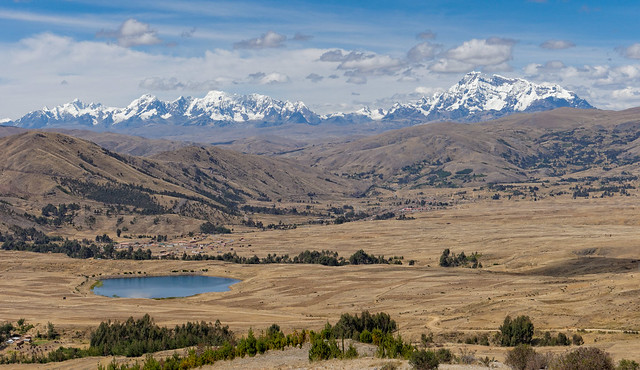
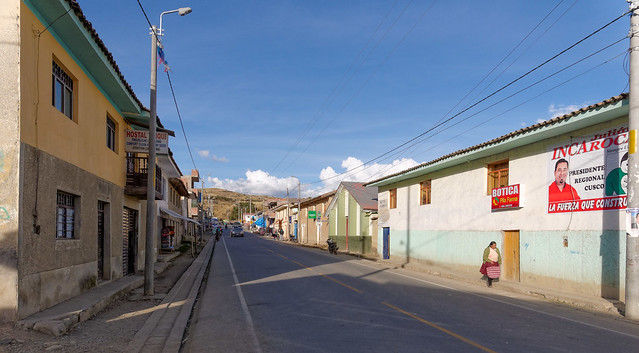


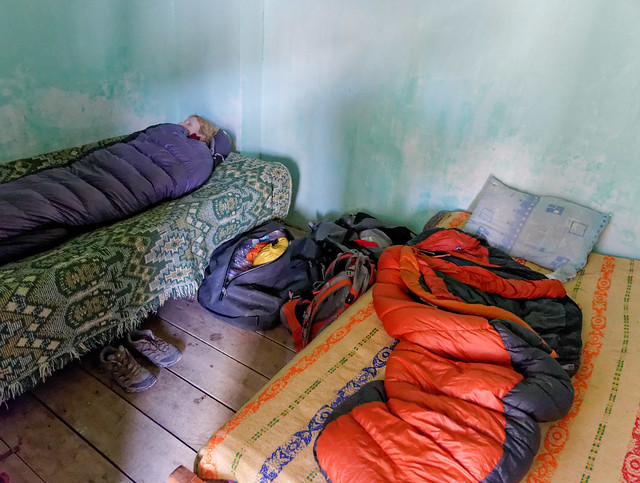
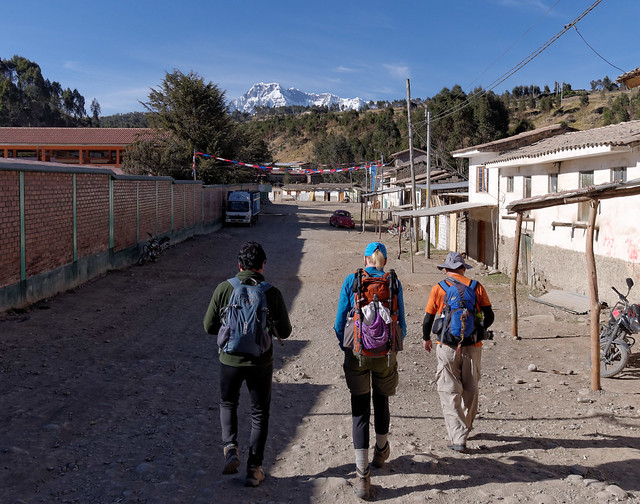
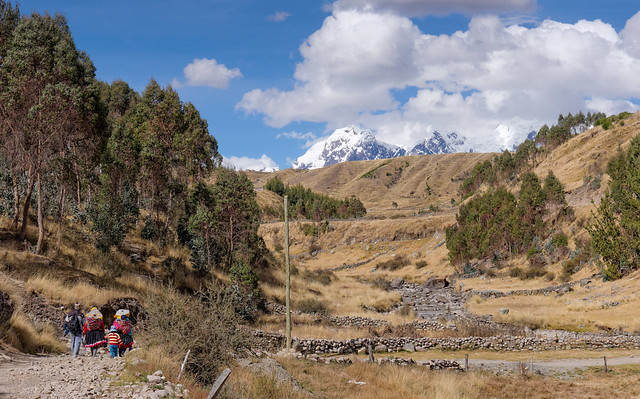

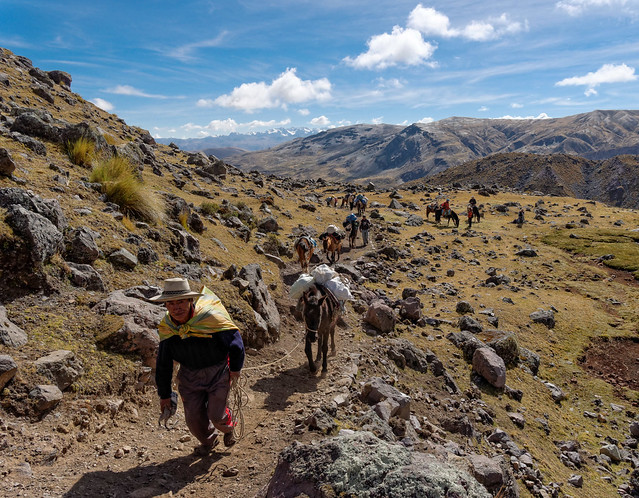
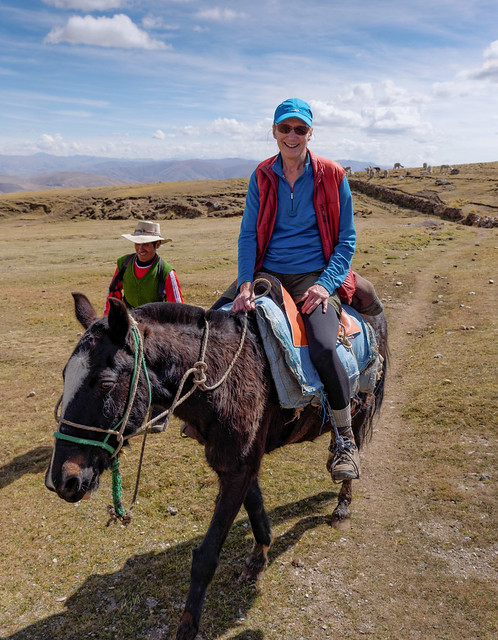
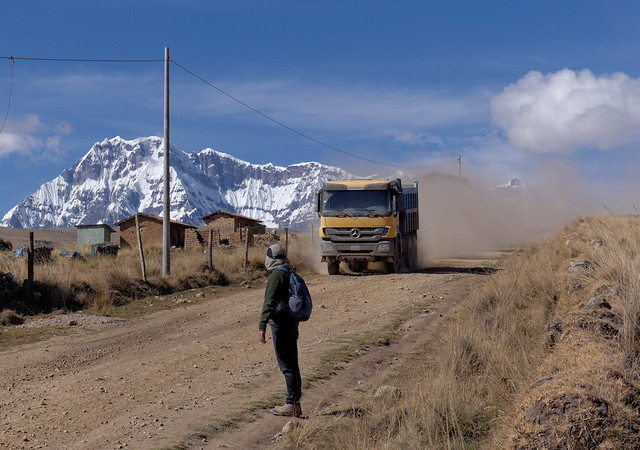

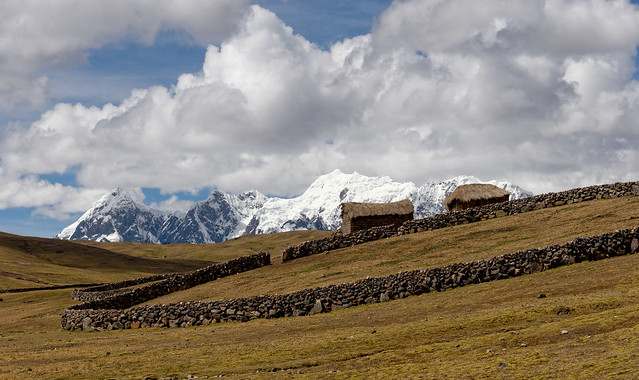


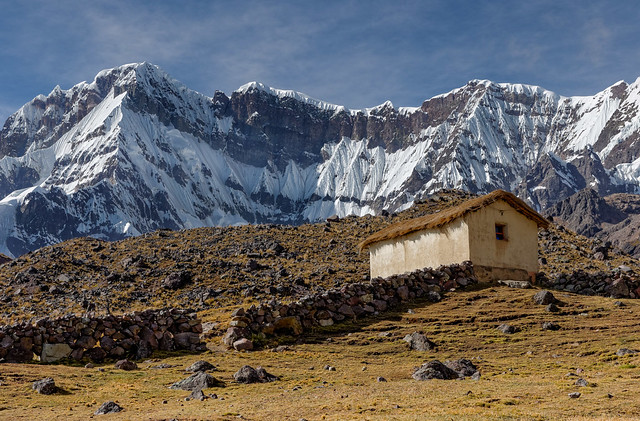
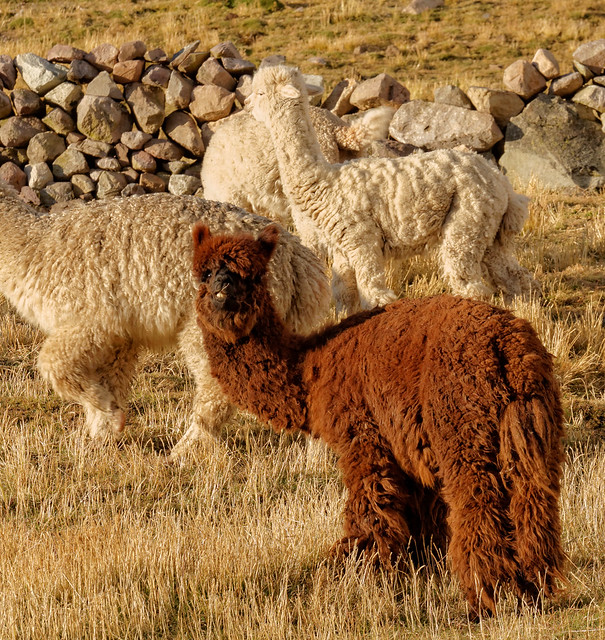
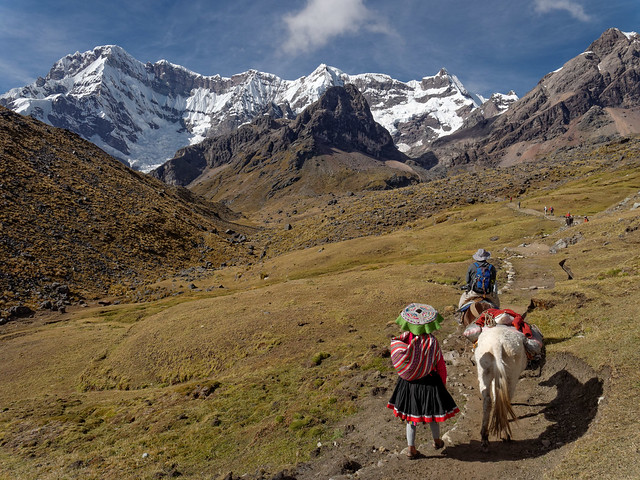
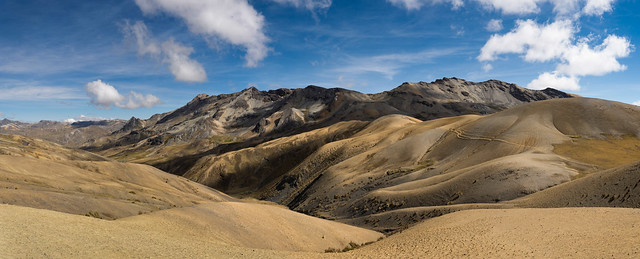
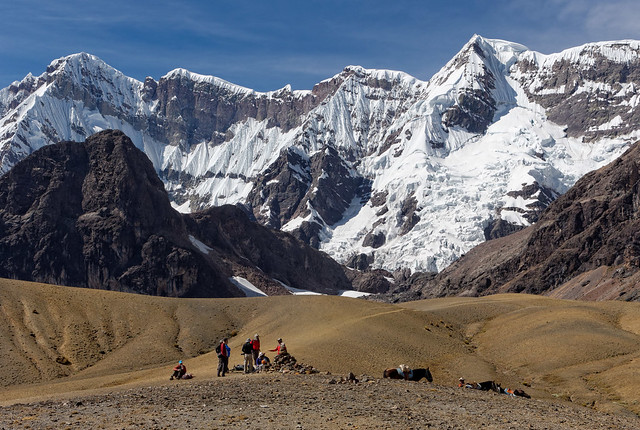
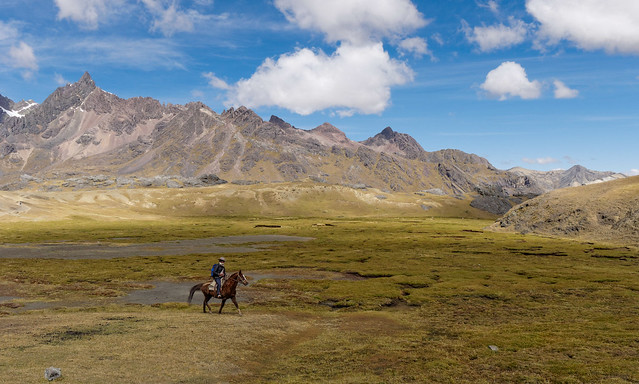
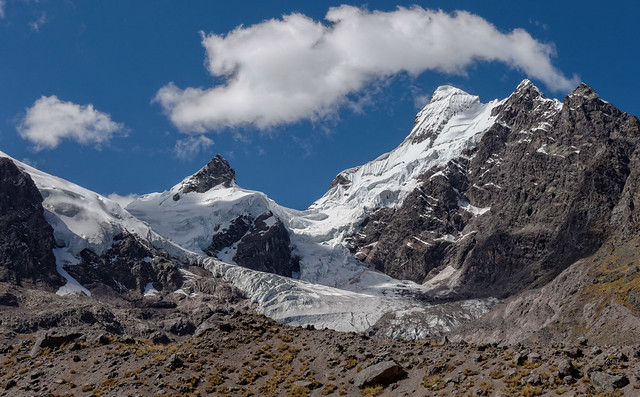
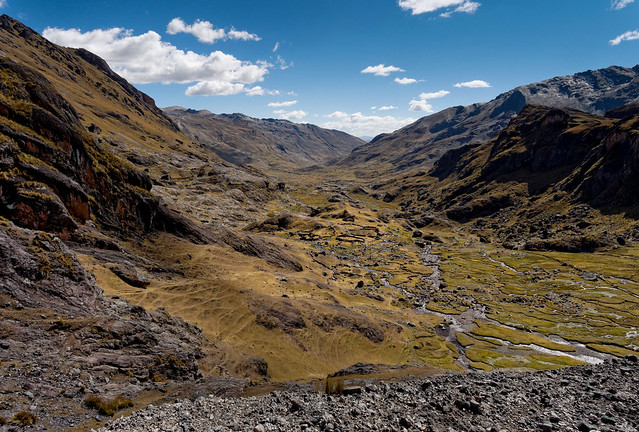
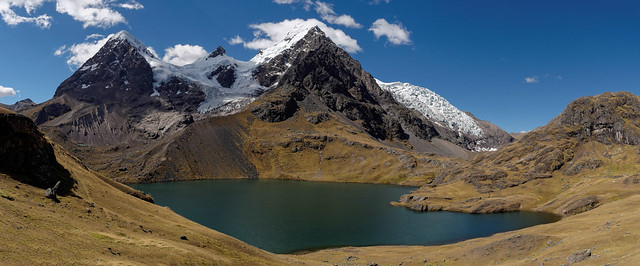
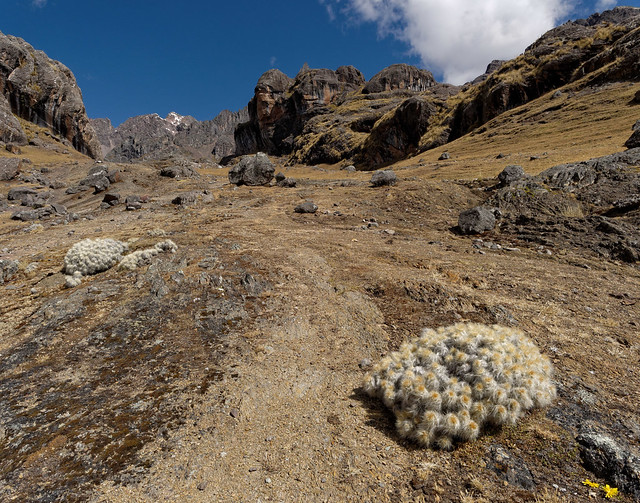

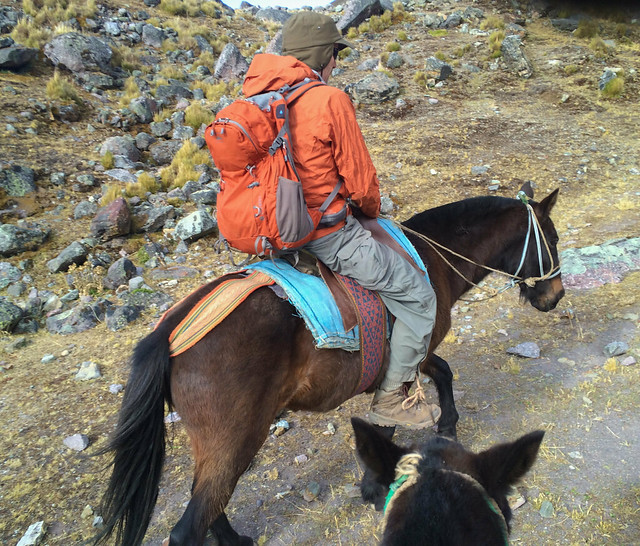
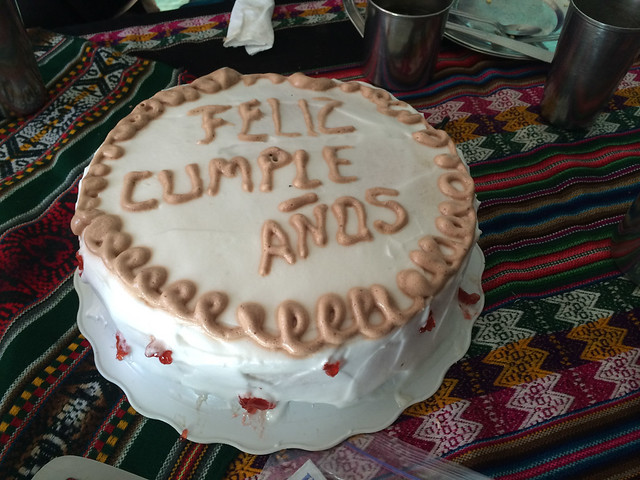


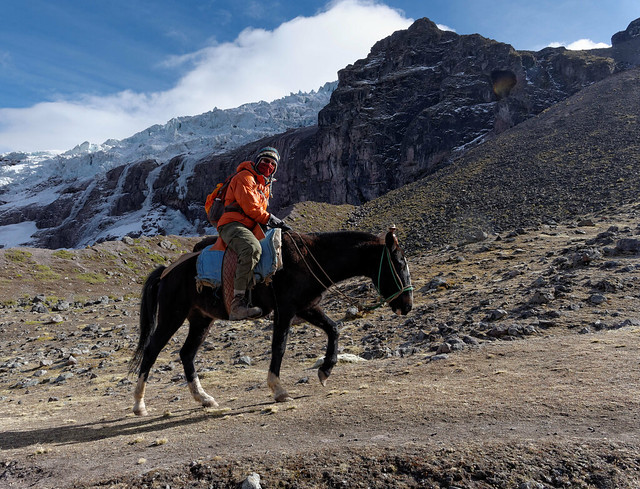

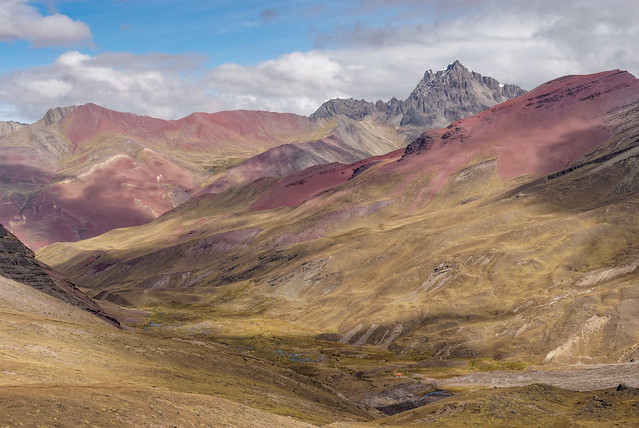


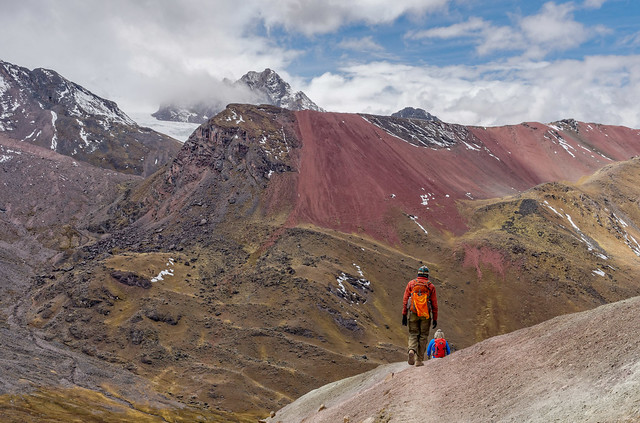
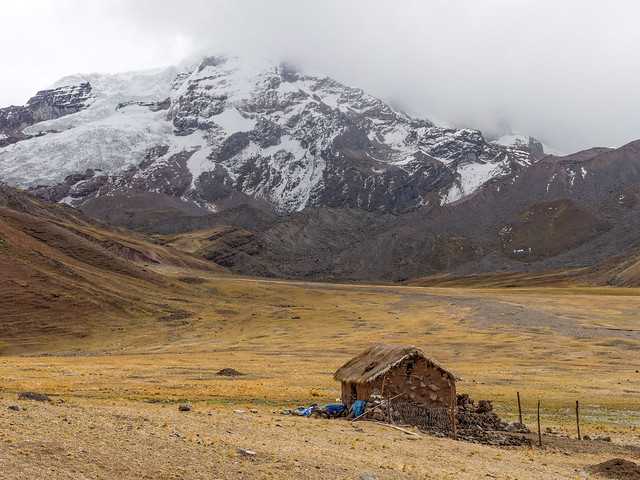
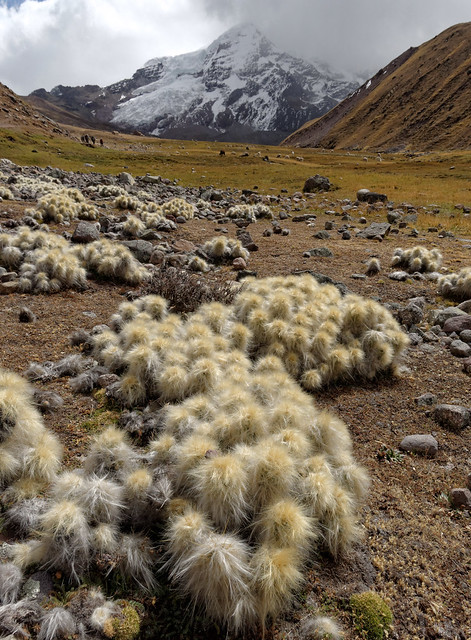
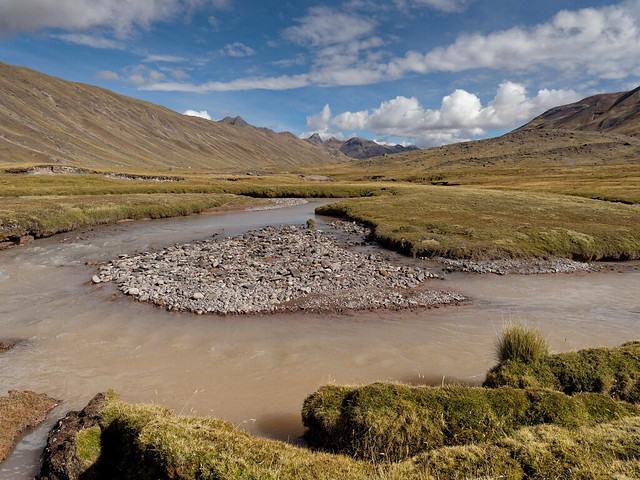
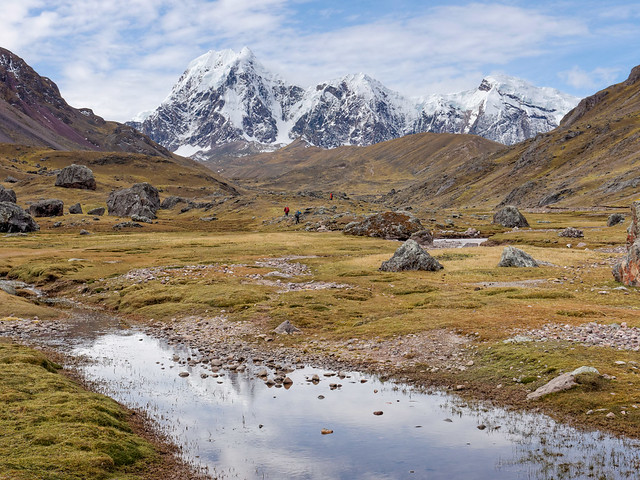
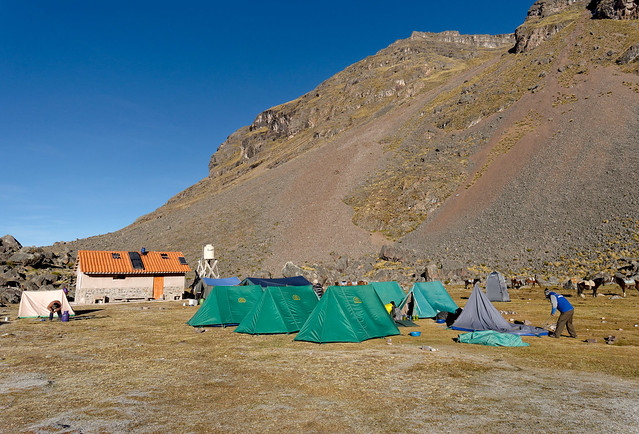
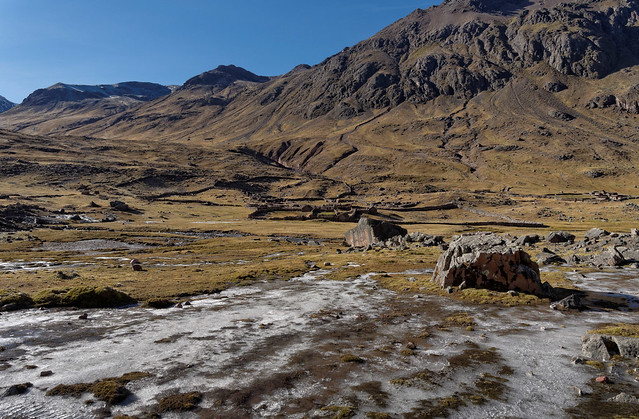
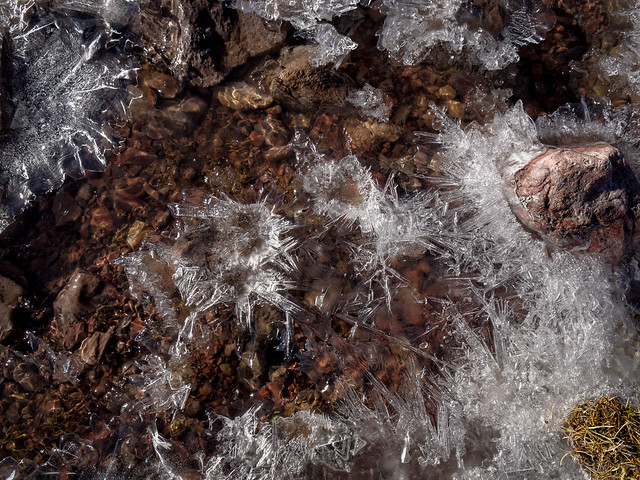
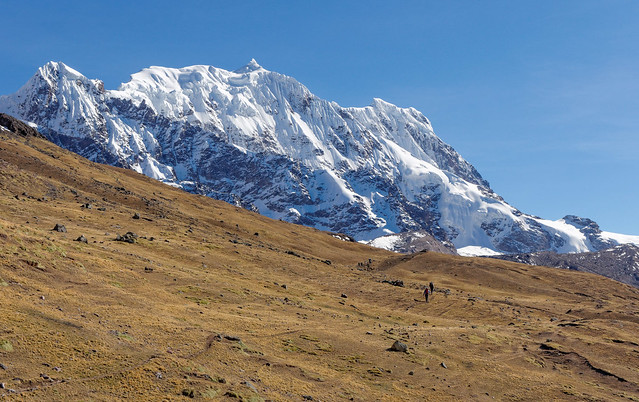
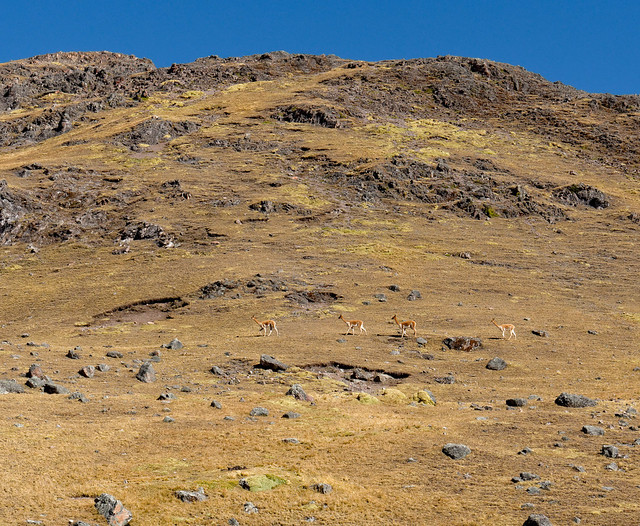

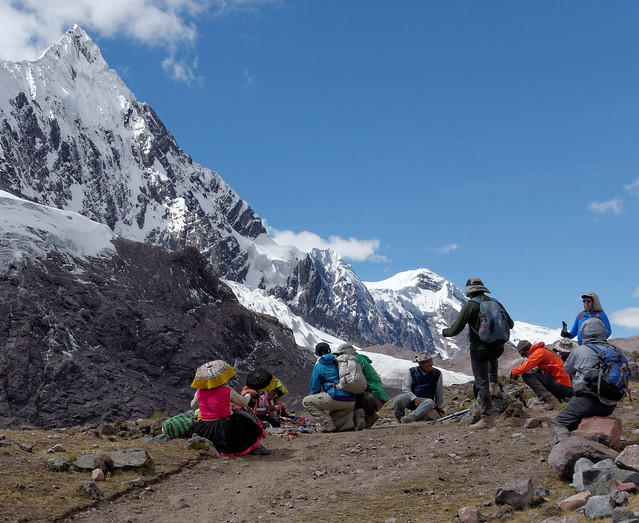
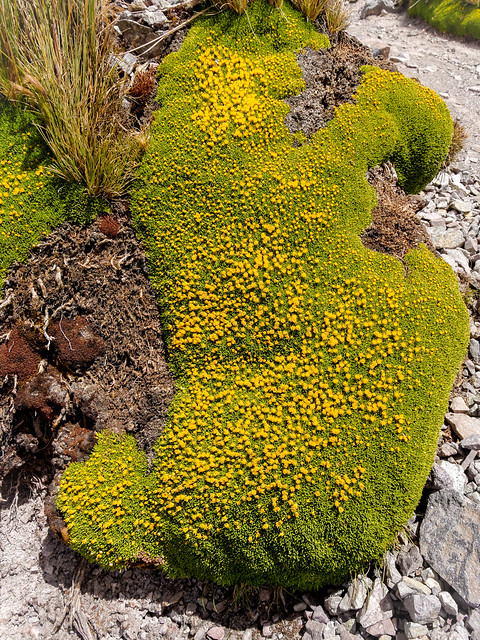

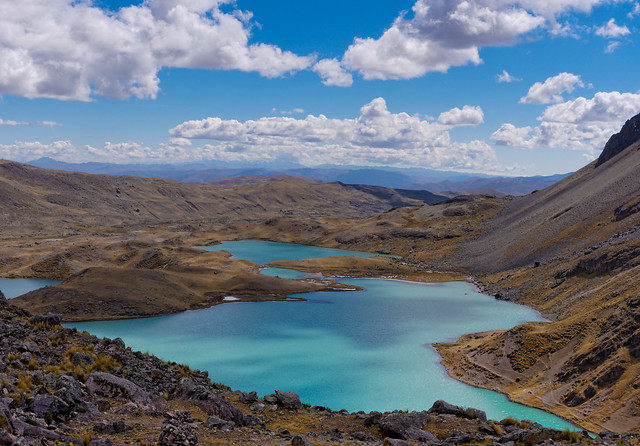
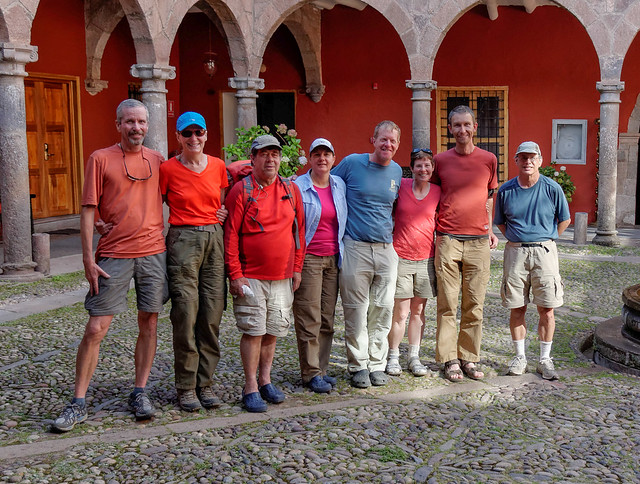
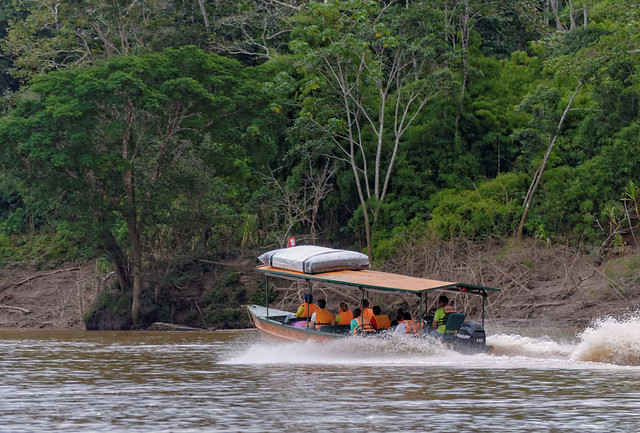

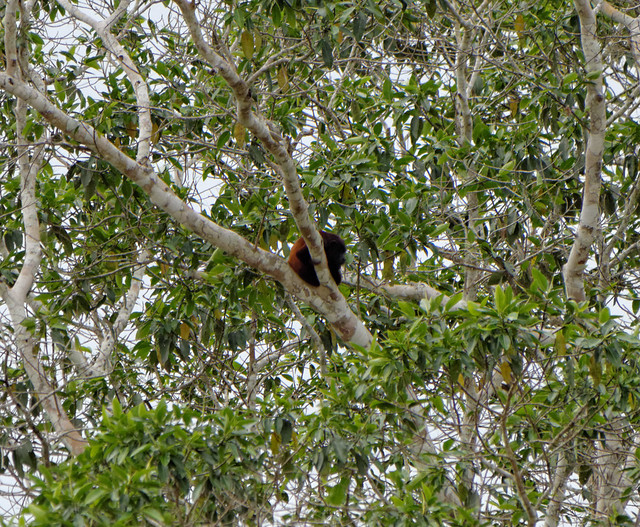
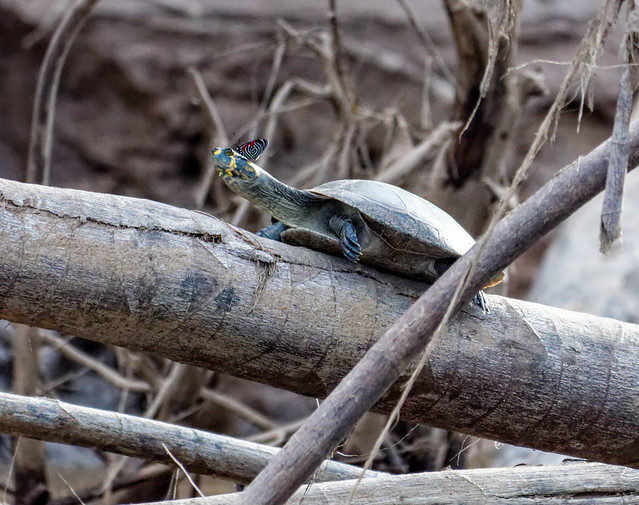

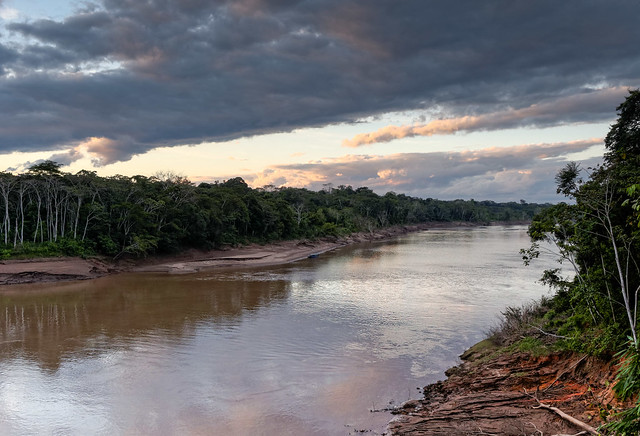
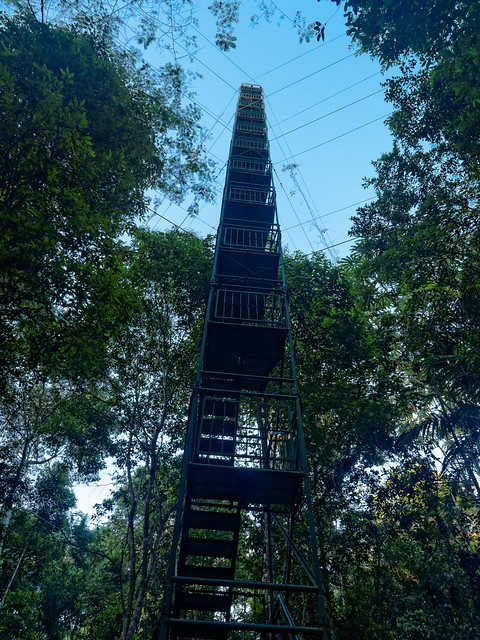
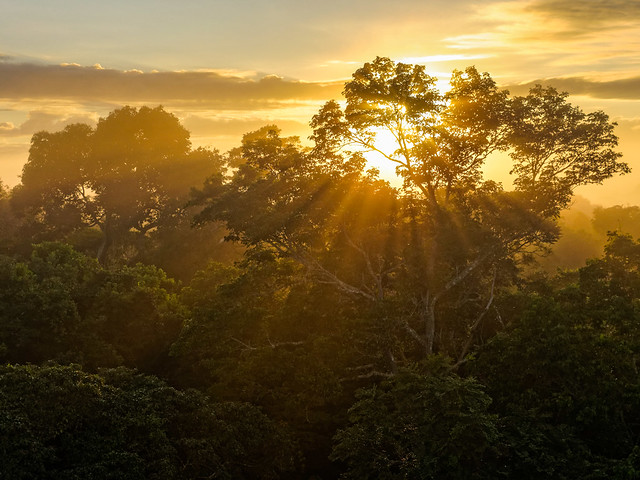

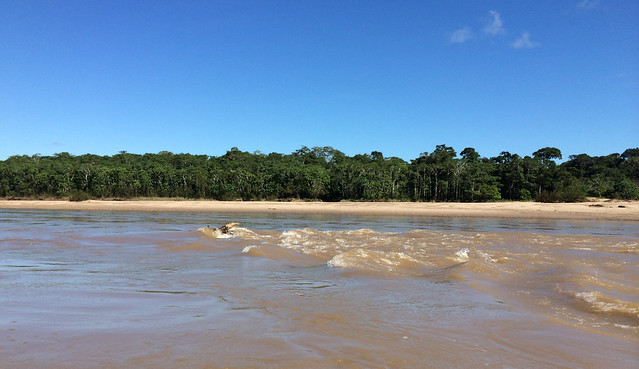



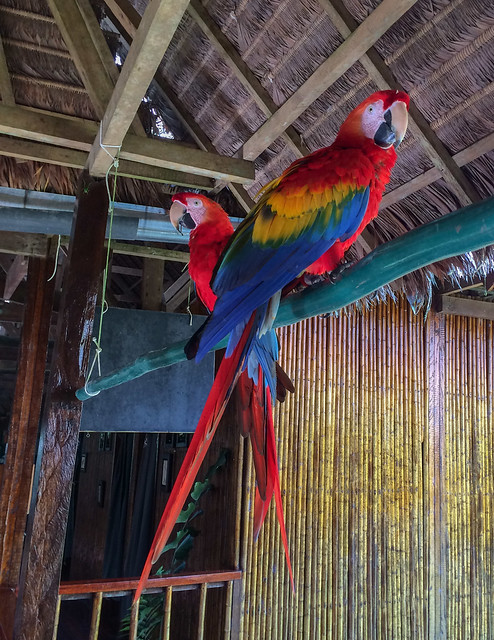
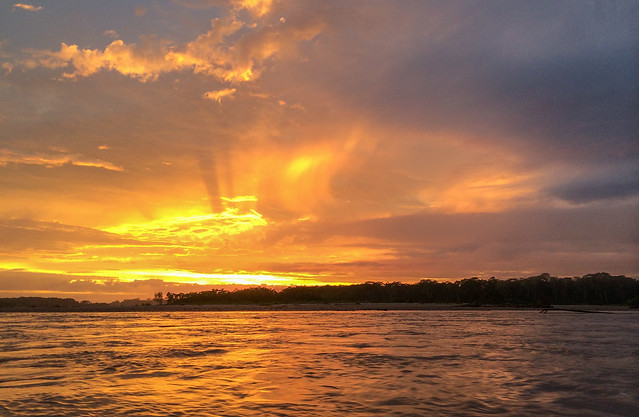



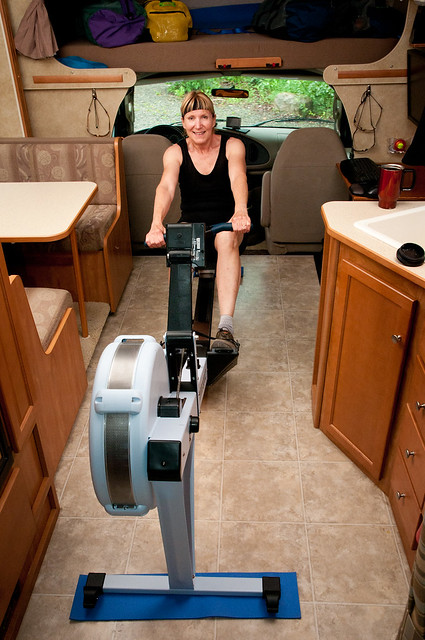



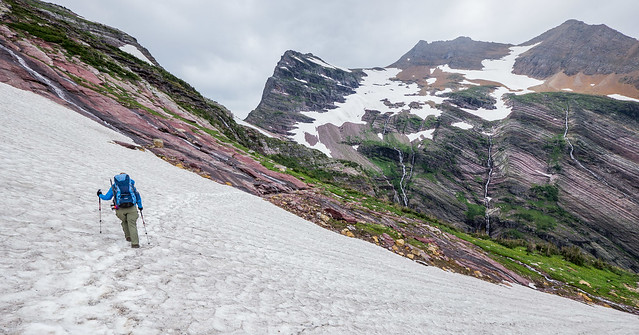
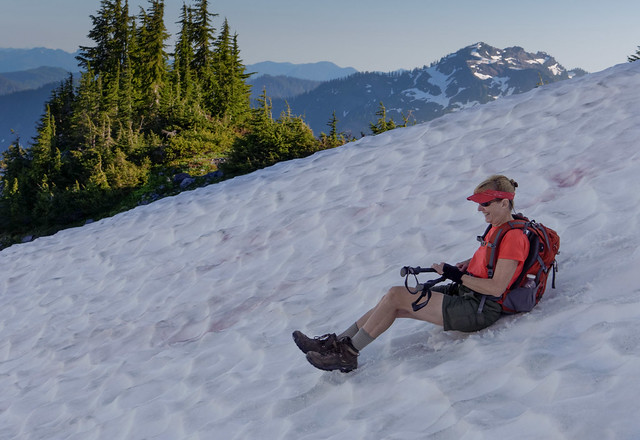
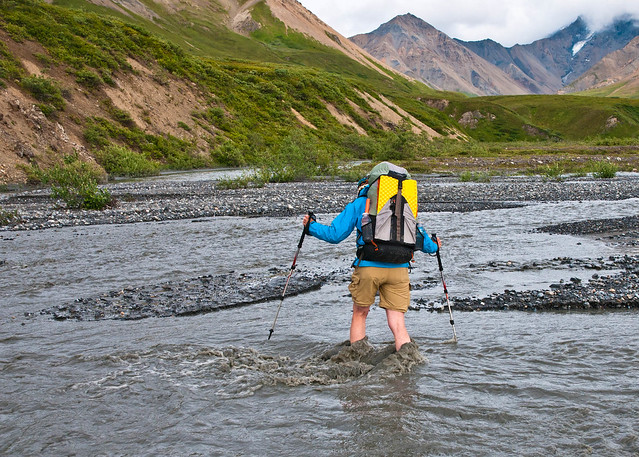
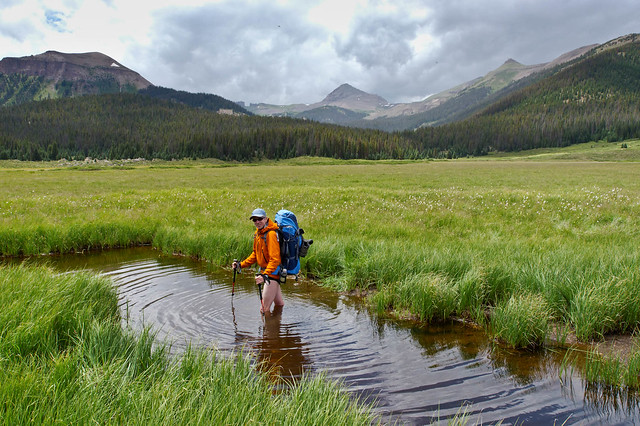
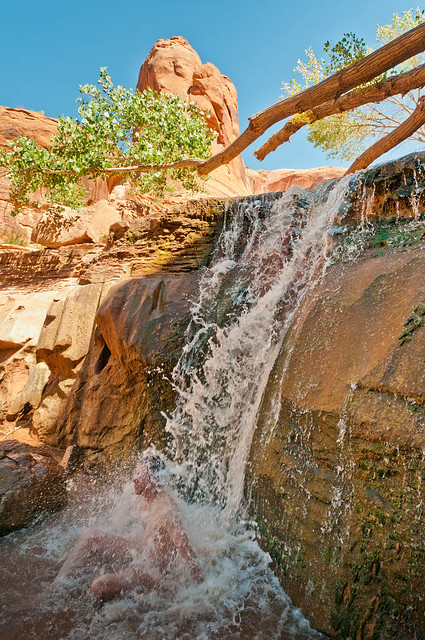
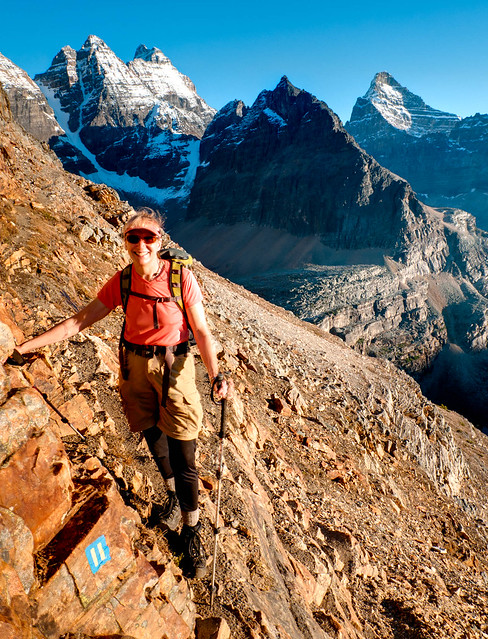
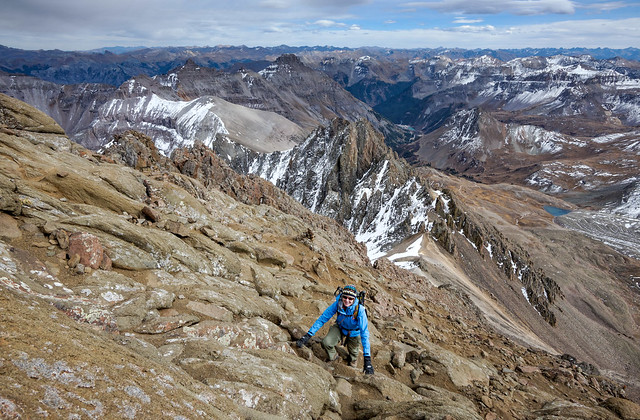



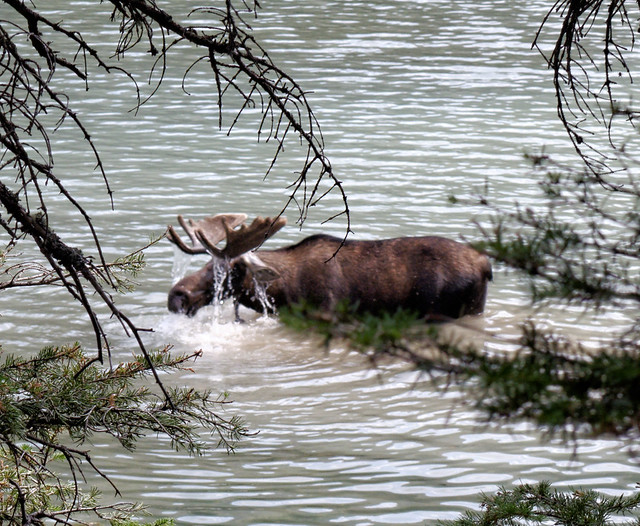


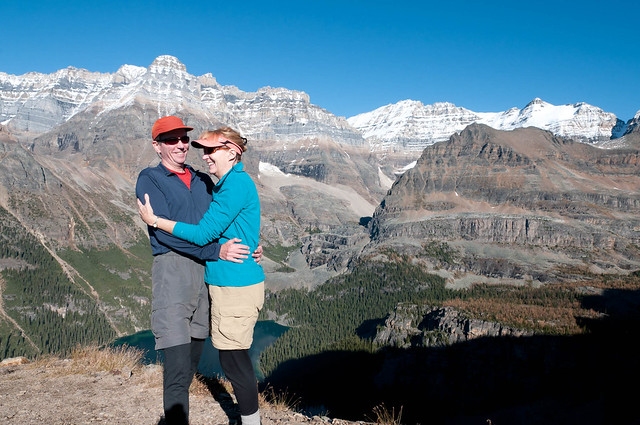
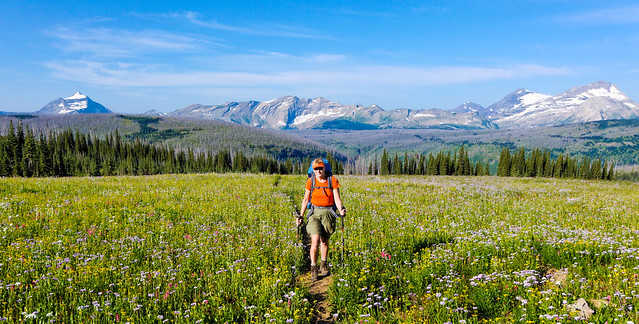
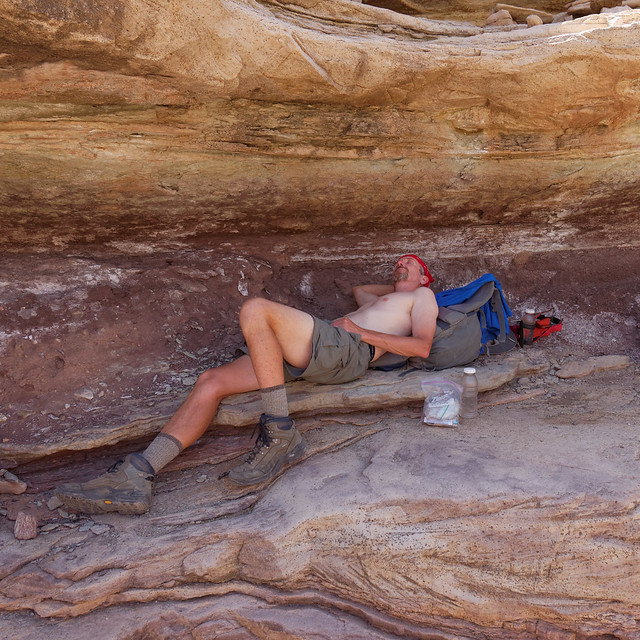




No comments:
Post a Comment